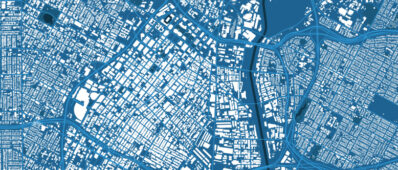conference paper
Archives: Research Products
conference paper
{Plug-N-Pwned}: Comprehensive vulnerability analysis of {OBD-II} dongles as a new {Over-the-Air} attack surface in automotive {IoT}
29th USENIX Security Symposium (USENIX Security 20)
Publication Date
Author(s)
Suggested Citation
Haohuang Wen, Qi Alfred Chen and Zhiqiang Lin (2020) “{Plug-N-Pwned}: Comprehensive vulnerability analysis of {OBD-II} dongles as a new {Over-the-Air} attack surface in automotive {IoT}”, in 29th USENIX Security Symposium (USENIX Security 20), pp. 949–965. Available at: https://www.usenix.org/conference/usenixsecurity20/presentation/wen (Accessed: October 11, 2023).book/book chapter
The Activity-Based Approach
Publication Date
Author(s)
Suggested Citation
Michael G. McNally and Craig R. Rindt (2007) “The Activity-Based Approach”, in D.A. Hensher and K.J. Button (eds.) Handbook of Transport Modelling. Emerald Group Publishing Limited, pp. 55–73. Available at: https://doi.org/10.1108/9780857245670-004.conference paper
A household activity scheduling model incorporating a task allocation process with week-based learning mechanisms.
11th international conference on travel behavior research, kyoto, aug 16-20
Publication Date
Author(s)
Suggested Citation
HK Kim, H Kim and MG McNally (2006) “A household activity scheduling model incorporating a task allocation process with week-based learning mechanisms.”, in 11th international conference on travel behavior research, kyoto, aug 16-20.published journal article
Physical layer cryptographic key generation by exploiting PMD of an optical fiber link
Journal of Lightwave Technology
Publication Date
Author(s)
Suggested Citation
Imam Uz Zaman, Anthony Bahadir Lopez, Mohammad Abdullah Al Faruque and Ozdal Boyraz (2018) “Physical layer cryptographic key generation by exploiting PMD of an optical fiber link”, Journal of Lightwave Technology, 36(24), pp. 5903–5911. Available at: 10.1109/jlt.2018.2880957.published journal article
How effective are current household recycling policies? Results from a national survey of U.S. households
Resources, Conservation and Recycling
Publication Date
Author(s)
Suggested Citation
Jean-Daniel M. Saphores and Hilary Nixon (2014) “How effective are current household recycling policies? Results from a national survey of U.S. households”, Resources, Conservation and Recycling, 92, pp. 1–10. Available at: 10.1016/j.resconrec.2014.08.010.conference paper
Minimizing departure time for outgoing trucks in a crossdock
Proceedings of the 87th annual meeting of the transportation research board
Publication Date
Author(s)
Abstract
Crossdocks play important roles in supply chain operations. Due to the need to decrease transportation leadtime to coordinate with other supply chain activities such as just-in-time, make-to-order or merge-in-transit strategies, minimizing labor costs is not necessarily the only goal in crossdock operations. In this research, we schedule waiting inbound trucks in such as way as to allow for the early departure of outgoing trucks. This minimizes the time freight spends in a crossdock. We use a dynamic simulation model to compare the performance of First-come-first-served, Look-ahead and Leave-early policies under different truck inter-arrival times and crossdock layouts. From our simulation results, we find that our Leave-early algorithm can save up to 12% on freight wait time in outgoing trucks and 4% on total time relative to the other policies under a 4 receiving doors and 4 shipping doors layout. In addition we suggest guidelines for choosing scheduling algorithms in different situations.
Suggested Citation
Jiana-Fu Wang, Amelia Regan and Mei-Ting Tsai (2008) “Minimizing departure time for outgoing trucks in a crossdock”, in Proceedings of the 87th annual meeting of the transportation research board, p. 17p.conference paper
A web 2.0 platform for experimental research into day-to-day route choice behavior in advanced traveler information systems
Proceedings of 91st annual meeting of the transportation research board, washington, DC
Publication Date
Author(s)
Suggested Citation
J. Barberillo and W.-L. Jin (2012) “A web 2.0 platform for experimental research into day-to-day route choice behavior in advanced traveler information systems”, in Proceedings of 91st annual meeting of the transportation research board, washington, DC.research report
Transportation Plans: Their Informational Content and Use Patterns in Southern California
Publication Date
Associated Project
Author(s)
Areas of Expertise
Abstract
While a large amount of effort has been devoted to making and updating local transportation plans, little is known about the informational contents of these plans and their use patterns. This project attempted to identify key informational contents of Californian cities’ transportation plans and to investigate how the plan contents can be used by various stakeholders through (i) a plan content analysis of a sample of general plans (recently adopted by eight municipalities in Orange County, California) and (ii) a plan use survey and follow-up analysis of survey responses. All plans analyzed were found to convey a variety of information about their visions, goals, policies, and implementation strategies, but the plan content analysis revealed substantial variation in the way cities composed their general plans and integrated them with other plans/players. Compared to land use elements, circulation elements tended to focus more on their connections with other agencies (external consistency) than on internal consistency. The plan use survey yielded a low response rate which may indicate limited use of plans in the field. However, a majority of the survey responses were positive about the usefulness and usability of general plans. In particular, the survey participants reported that they found the plans comprehensive, visionary, and well-organized, while relatively lower scores were obtained for two evaluation criteria: ‘[the plan] clearly explains what actions will be taken and when’ and ‘[the plan] is relevant to my everyday life and/or work’. Furthermore, some respondents reported that they used general plans not for their professional duties but for other (non-conventional) purposes, suggesting that plan contents could be used for a variety of decision-making processes.
Suggested Citation
Jae Hong Kim, Xiangyu Li, Tanjeeb Ahmed and Victor Paitimusa (2018) Transportation Plans: Their Informational Content and Use Patterns in Southern California. Available at: https://escholarship.org/uc/item/1f33s1kz (Accessed: October 11, 2023).published journal article
